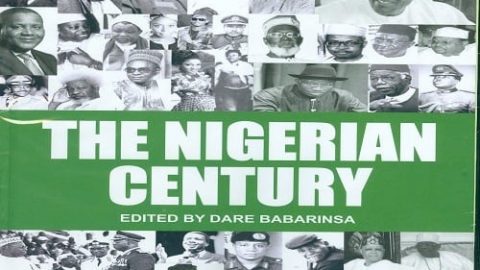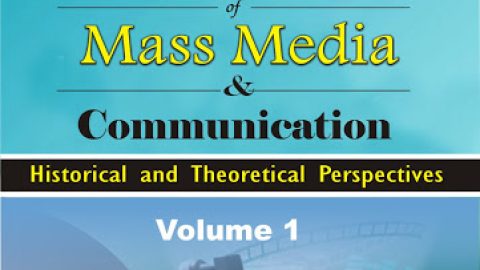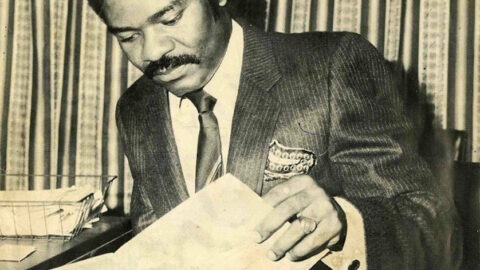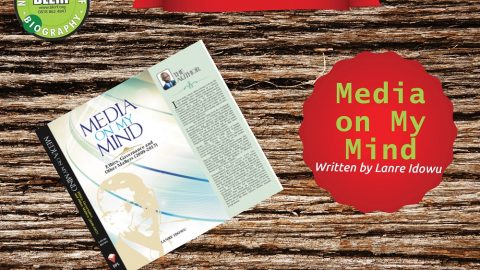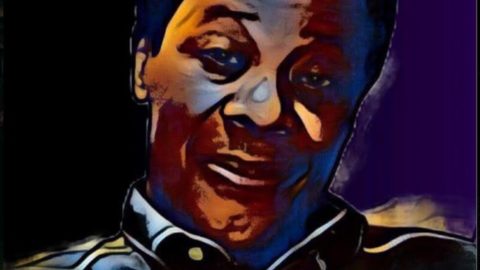This book is sure going to tickle you a little. You will laugh and scream and wonder as you turn each page. Then you may likely ask no one in particular: can these really be true? Did it ever happen this way? Is this for real? And the answers will pop from the pages as you hear, feel and savour the aroma of the beautiful tales. The taste is unforgettable.
The narratives are historical only in the sense that they happened in the past. But this is not a history book; in the academic sense. The contents are not based on any form of scientific research. They are diligent, almost flawless recollections of a fertile, observant mind. Names are mentioned. Events and years are cited. This is not grandma’s folk tale. Every tale is real and verifiable. So, you can call it soft history.
Memories of Yesteryears: Nostalgic Reminiscences by Akpandem James, is a unique literary compilation. It is a collection of experiences that are both personal and cultural. Each subject and issue is a product of specific and different environment. The author, while telling the stories from the point of view of one who saw, participated or experienced them, skilfully distances himself from the scene. He is merely a story teller; an extraordinary re-caller of events that should not be forgotten.
Every event in this 220-page book is vividly recalled and skilfully re-constructed while comments by identified characters are beautifully paraphrased without deliberate distortions. Nothing fictional! Yes, there are some traces of ornamental additions called embellishment. But that’s to be expected in any mental recollection of events.
The book opens with Advertising of Old: Ajasco Boy. It features the mysterious dancer called Ajasco Boy, the human tool deployed to spearhead drug advertisement squad in the 60s and 70s. The advertising ensemble includes a monkey, a snake and a parrot. Each is depicted by the author to play significant parts in the business; mainly attracting customers. This chapter also reveals how simple games such as nsa odukpok (draught) and nsa isong (ayo) were effectively used as marketing tools in the sale of palm wine. The trick was that the longer you play the games, the more palm wine you consume; and the more money the tapper makes.
The recollections mock and contrast the digitally-driven and constantly changing new- age advertising where technology has replaced human creativity and science has made nature irrelevant.
Exciting! Thrilling! Revealing! These three words must sharpen your appetite as you turn the page. Here, you come face to face with fashion the way it used to be in a chapter entitledDresses, Hairstyles and Dance Steps. This chapter is my favourite. It discusses the metamorphosic nature of fashion from what was in the 40s, 50s, and today. The revelation is that these changes have only been in terms of era and seasons because “fashion comes and goes, and then returns in a slightly different format.”
This book and what it presents is not a surprise to some of us who know Akpandem. He has a description for every form of dance, dress and hair style. He has a way of connecting the contemporary with the anachronistic with such vivid description that would trigger curiosity and questions.
Truly, Akpandem has written the way Akpandem talks — I’m referring to his captivating style; simplicity of language and the knack for recording easy-to-ignore details. He discusses mini skirt and sagging with ease and clarity. In skilful details, he describes the Afro hairstyle — the process and the ingredients needed to fry and give it the required shape. The author names such hairstyles as Onosode, Uwaifo, Ojukwu (familiar names), Ajilo, Papilo, etc. Then he presents the dance steps of the time — Souls, Swing, Step, Twist, Cha-cha-cha, Ajasco, Merengue, Skanking, Shuffle and Jerking.
The intention of the author is that by the time you are through reading, laughing and comparing the fashion and dance trends in the book with what’s currently happening in the social circles, you would wish yesteryears were here. Ever heard of the trouser called Bongo? Or the shoes called Saika? They are all captured here. Come on! Let’s go skanking! Cha-cha-cha!
Remembering the Photographer is explosive. It is a study in obvious contrast between the photographic process of time long past and the android-phone selfies of today. The recollection has its setting in Agbokim Waterfalls — a photogenic community in Ikom, Cross River State. The only photographer in town was Alex of Alex Photos. Once a month, he covered a three-hour bicycle-ride distance between Four Corners where he lived and Agbokim Waterfalls. That means for every snapshot taken, you have to wait four long weeks to have the printed copies delivered.
Akpandem’s description of the old school process of taking snapshots is meticulous. The equipment used are listed and analysed. Also described is the process of developing and drying the film before printing. Even the author is wowed by the long and complicated process.
The scene moves to the Old City of Calabar in Disco: Thrills and Frills of Dance Party. The setting and the timing indicate that night clubs were strictly an exclusive preserve of real and tested adults; not overgrown babies as it is these days. The author discusses the brands of music machine called the Turn-Table which replaced the good old gramophone. They don’t come in that shape any longer.
Move over to Bands in the Yesteryears where Akpandem captures with ease of a witness, the reigning bands of old, and the star vocalists. This chapter is loaded with such mentally dug-up background information that would make you wonder at the depth of recollection and accuracy of facts displayed by the author. Here, Akpandem discusses and recaptures notable lyrics of each musician. Then comes Visiting the Barber which brings to memory the various tools employed by old-time barbers in the haircut business; and of course the, the different hairstyles.
Suppressing the smiles will be difficult when you read Rice and Chicken Had Honour and Glory. It opens with two explosive statements: “rice has lost its glory. And so has chicken.” This is because unlike what currently happens in various kitchens, “rice and stew with chicken was a special meal for very special occasions.” As the author explains in concrete terms what made rice and chicken, in times past, uncommon food items, you begin to wonder what has changed. Is it the coming of fast-food joints or the digitalisation of human appetites?
For those of us who still eat the native home-grown fowl with all the nutrients intact, the 50s are still here. Even as I read this book, I can feel in my mouth “the flavour, spiced with stew….” As observed by the author (from personal experience), I still love to “suck the tasty marrow by cracking both ends of the bone.”
Songs, food varieties, ceremonies, and family protocols during festivals complete the story in a manner that would make the post-civil war children grin with envy while adults look back with nostalgia.
Toasting Back in the Day is strictly for adults. It is a story of how the sacred process of admiring, approaching and proposing friendship to the opposite sex has not only been defamed but is being handled with impious irreverence. Experiencing Secondary School takes us back to the days when, not only secondary education was accorded a place of importance, the students were venerated. Reason: attending that level of education was uncommon in those days. This is a fantastic recall of the era with unforgettable details; it comes with names of both the notorious and the famous students; and specific incidents that made the era what it was.
Football Rivalry in Secondary School captures the fun, the tears and the joy of soccer rivalry exhibited by various secondary schools in specific areas picked by the author. It is followed byTreading the Minefield; a story of the Nigerian Civil War and the risks suffered by the innocent civilians. When you read the story, its beauty and intimacy make you wonder whether the author was a participant or a witness. The setting is northern Cross River State.
Crossing the Cross River tells the story of the famous pontoon used in crossing from Calabar in Cross River State to Oron in the present Akwa Ibom State in time past. This chapter is followed by Long Road to Travel, another captivating story of how local and even urban dwellers used to travel in those days. It’s a story well told. The recollection on transportation ends withMany Rivers To Cross: Ikom to Calabar.
Here comes the story Akpandem loves to tell: Trailing the Masquerade. Just as the tale on old school fashion and dance steps, this will sweep you off your feet. To an ordinary reader, this topic is just about masquerades—something scary and entertaining. But only those who have witnessed any of the scenes described in this chapter will appreciate the depth of information recollected and captured. It’s a beautiful tale both in the recall and presentation.
Akonjom the Village Clown is as entertaining as it is informative. It is the story of an era when high fences and huge gates were unheard of in residential accommodations. Even a clown had access to people in their homes. Pranks in the Church, the 18th Chapter, opens with a declarative statement, “people go to church for different reasons.” Absolutely! The author explains with examples what each church of that era offered the congregation and what the attractions were in each case.
Cars were not common in the immediate past. That’s the focus in The Village Mammy-Wagon. The author states that whenever a vehicle passes through a particular community, children will run after it as far as they could. They will then return to scoop the trail left by the tyres of the vehicle and drop in the farm as nutrient. The story then focuses on the joy of boarding the mammy-wagon owned by the richest man in the village. The last chapter is entitled Ndifon and His New Motorcycle.
As a seasoned journalist, writing comes to Akpandem naturally. Add that to the other secret virtue he is endowed with — intelligent story telling ability with eyes on details, and you will wonder whether the book has no flaws whatsoever? Perhaps it does; and I have been too busy laughing and kicking the air that I could not notice any serious error.
However, the use of two emphatic words — “nostalgic reminiscences” — in the title, may likely trigger some heated arguments in academic circles because both words have close semblance in meanings; almost synonymous.
Again, in my copy of the book, the contents of Chapter Nine entitled Experiencing Secondary School, is repeated in Chapter 10 under the title The New Principal and His Style. The last chapter, Ndifon and His New Motorcycle is incomplete—there are only two pages. These of course, are not the author’s errors. We have the publisher to hold responsible.
What a book! And who could have written it except Akpandem. I recall those moments of camaraderie when we would meet to chat about anything and everything. Suddenly, Akpandem will raise a song, demonstrate strange dance steps; and end up with a story that would make you laugh with tears in your eyes. That is why this book is not a surprise. The surprise would have been if it were not written — by Akpandem.
Some books are so vivid, so thrilling and near-perfect that you wish they do not end. This is one of them. Besides the inadvertent technical defects by the publishers, this book is a gift to generations yet unborn. Are you ready, let’s go cha-cha-cha!



